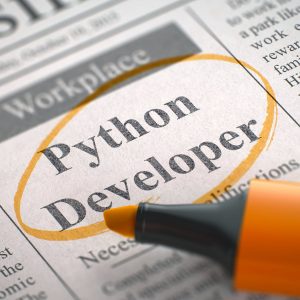
This course is about data structures and algorithms. We are going to implement the problems in Python. I highly recommend typing out these data structures and algorithms several times on your own in order to get a good grasp of it.
Section 1:
setting up the environment
data structures and abstract data types
Section 2:
what is an array data structure
arrays related interview questions
linked list data structure and its implementation
Section 3:
stacks and queues
related interview questions
Section 4:
what are binary search trees
practical applications of binary search trees
Section 5:
problems with binary trees
balanced trees: AVL trees and red–black trees
Section 6:
what are heaps
heapsort algorithm
Section 7:
associative arrays and dictionaries
how to achieve O(1) constant running time with hashing
ternary search trees as associative arrays
Section 8:
basic graph algorithms
breadth–first and depth–first search
Section 9:
shortest path algorithms
Dijkstra’s algroithm
Bellman–Ford algorithm
Section 10:
what are spanning trees
Kruskal algorithm
Section 11:
sorting algorithms
bubble sort, selection sort and insertion sort
quicksort and merge sort
non–comparison based sorting algorithms
counting sort and radix sort
In the first part of the course we are going to learn about basic data structures such as linked lists, stacks, queues, binary search trees, heaps and some advanced ones such as AVL trees and red–black trees.. The second part will be about graph algorithms such as spanning trees, shortest path algorithms and graph traversing. We will try to optimize each data structure as much as possible.
Instructor Details
Courses : 24
Specification: Algorithms and Data Structures in Python
|
6 reviews for Algorithms and Data Structures in Python
Add a review Cancel reply
This site uses Akismet to reduce spam. Learn how your comment data is processed.

$199.99 $11.99







Thomas Ortiz –
The information content is excellent and the explanations are clear. The only improvement I can suggest is to reduce the amount of repetition in the explanations. It is clear that the instructor is using the T3 principle (tell them what you’re going to tell them, tell them, then tell them what you’ve told them), which is good practice, but perhaps overdone here.
Wilson Chiang –
Wish you can be more detailed on how the rotation works in the AVL tree section.
Rohith Tadiparti –
his voice and accent are not clear
Radmilo Markovic –
yes it is great way to learn something new.
Artem Zhukov –
Very clear, meaningful explanation. Not hard, not easy. Nicely structured: theory practice examples. It also has quizzes
Jorge Alejandro Hernandez –
Great explanation. Good utilization of Big O notation. I love it so far!